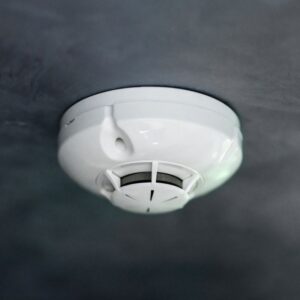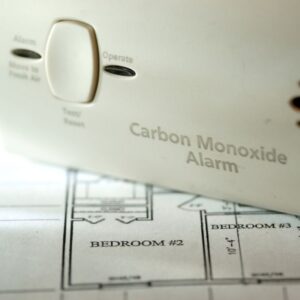URGENT!
Due to the weather, we are experiencing intermittent power outage and loss of internet. Please expect delays and or rescheduling of appointments during this time. We will reach out to you as soon as we can. Stay warm and stay safe!
Homeowners are always striving to make sure that their homes are in the best shape. This not only includes the way they function, but also the way they look. Chimneys are one part that always seems to get the unappealing visual effects, but now there are ways to fix that. Parging is a mixture that will give your masonry wall a fresh look. To learn more call the technicians at Lords Chimney today!
Parging can be used on almost any indoor or outdoor structure made of concrete, brick, or stone. The mix contains water, lime, and a blend of cement and can be made at your home. However, it is important that every ingredient is measured properly, so if you prefer you can buy a pack at the hardware store and just add water. It is also important to make sure that you are adding just the right amount of water. Mix with too much water can crack, but mix that is short on water may not stick.
Parging is the trick to cover anything that you may not want people to see such as cracks, holes, or water damage, all without costing a fortune. Parging is also sometimes used for sealing off small air leaks, which can overtime improve your electric bill. If you are buying a property you should make sure that none of these errors have been previously covered by parging without being properly fixed. This could cost you more money later if something were to go wrong.
You can apply parging on your own, however it is always recommended that you have a professional do your chimney work. You will need a masonry trowel to apply the mix so you can be sure to get thin layers and reduce the chance of it being too heavy. Also, make sure the walls you are coating are wet so that the mix sticks properly. Parging can be applied to have a smooth look, or a textured look. To get the smooth look keep your trowel wet and apply a second coat after the first has time to dry completely. If you would like, parging can be painted to match other walls.
A deadly toxic gas that can enter your home if you have venting problems with your chimney or other heating unit, carbon monoxide is responsible for killing over 400 Americans by unintentional poisoning annually.
According to the Centers for Disease Control and Prevention (CDC), carbon monoxide poisoning also sends over 20,000 people to the emergency room, and more than 4,000 people end up having to be hospitalized due to carbon monoxide poisoning. This is why it’s very important to have your chimney inspected annually to ensure your chimney system is venting properly.
Our Chimney Safety Institute of America-certified technicians, who are experienced with solving carbon monoxide issues, would like to tell you more about this toxic gas that can silently enter your home and cause serious health damage…
 Carbon monoxide is a colorless, odorless, tasteless, and extremely toxic gas that is produced by burning fuels. Carbon monoxide is often called the “silent killer” because due to its properties, it is impossible to detect without specific equipment.
Carbon monoxide is a colorless, odorless, tasteless, and extremely toxic gas that is produced by burning fuels. Carbon monoxide is often called the “silent killer” because due to its properties, it is impossible to detect without specific equipment.
Carbon monoxide is produced by the incomplete combustion of fuels, including the wood, natural gas, or propane you use to heat your home. Depending on the type of heating appliance you have, your appliance may either burn hot enough to combust all traceable levels of carbon monoxide, or it will be vented out of your home through a chimney or ventilation system. If a ventilation system becomes blocked, such as from soot, debris, or nesting animals, carbon monoxide can be forced back into your home rather than exiting through the chimney or ductwork. A malfunctioning appliance also can cause a carbon monoxide hazard.
Its many sources include burning coal, wood, charcoal, oil, natural gas, kerosene, and propane. This means that most fireplaces, stoves, grills, space heaters, water heaters, furnaces, and even vehicles produce carbon monoxide gas. However, these appliances are normally either properly vented or located outdoors so they pose little to no risk to homeowners and their families.
Headache, dizziness, nausea, vomiting, weakness, chest pain, and confusion are all symptoms of low-level carbon monoxide poisoning. Since these symptoms are so similar to the flu or the common cold, carbon monoxide poisoning can be difficult to diagnose.
If you believe that you are experiencing the symptoms of carbon monoxide poisoning, immediately move to a fresh air location. Ideally this is outside, but can also be next to an open door or window. Call Poison Control and local emergency services before reentering the building.
If you persist in having these symptoms, ask your doctor for a carbon monoxide level blood test. High-level symptoms include organ damage, loss of consciousness, and death.
For some reason, your red blood cells would rather pick up carbon monoxide than oxygen. If there is a lot of carbon monoxide in the air, your body may replace all of the oxygen in your blood with carbon monoxide, blocking oxygen from entering your body, causing tissue damage and resulting, possibly, in death. Tissues can also be destroyed by carbon monoxide teaming up with the proteins in tissues.
 Have your fireplace and chimney cleaned and inspected by a reputable chimney company like Lords Chimney every year.
Have your fireplace and chimney cleaned and inspected by a reputable chimney company like Lords Chimney every year.Firstly, never burn anything in a fireplace that is not vented. Secondly, never patch a vent pipe with tape, gum, or anything else, which could cause carbon monoxide to build up more quickly. Thirdly, your indoor vent pipes should go up slightly as they go towards the outside. This helps prevent toxic gases from leaking if the joints or pipes are not fitted properly.
If you have any more questions about carbon monoxide, contact us today. Our experienced staff can answer whatever else you need to know about the dangers of carbon monoxide poisoning.
We know you care about keeping your family safe. One way to keep your family safe while at home is to minimize the likelihood of a deadly chimney fire. One way to minimize this risk is to make sure you do not allow creosote to accumulate.

Creosote is no laughing matter. The professionals at Lords Chimney can provide you with a wealth of information and service to give you that added peace of mind!
For homeowners with chimneys, there is one other thing that they worry about specifically – creosote. According to our team of experts here at Lords Chimney, more than 70% of the inquiries and concerns we receive from our loyal customers involve creosote in some form or fashion. So what exactly is creosote anyway?
If you look online you’ll see a lot of definitions filled with scientific jargon that would just confuse you a lot more than you may already be. But the definition from the Agency for Toxic Substances and Disease Registry describes and defines creosote in a simple and uncomplicated way. According to the ATSDR, creosote is basically the chemical byproduct of burning. There are different varieties of creosote. There’s the Wood, Coal Tar Pitch, Coal Tar Pitch Volatiles and Coal Tar. But basically they are all referred to collectively as creosote.
Although seemingly harmless during the beginning stages, creosote can quickly become extremely dangerous when left alone. You see, since it is a byproduct of burning, this means that it would constantly be produced whenever there’s burning of any kind in your chimney system. Once it is produced, it sticks to various parts of the fireplace and chimney. If it accumulates further, it becomes this thick volatile layer that is one of the number one culprits of chimney and house fires.
The best thing we can do to prevent things from getting out of hand is to properly maintain your chimney. Schedule regular inspections and cleanings to make sure that creosote build-up never gets a chance to reach threatening levels, which, in turn, would guarantee safety for your home and your family. So what are you waiting for? Pick up a phone and schedule an appointment right now. You can count on us for quality and dependable chimney and fireplace services. Lords Chimney is ready to help!